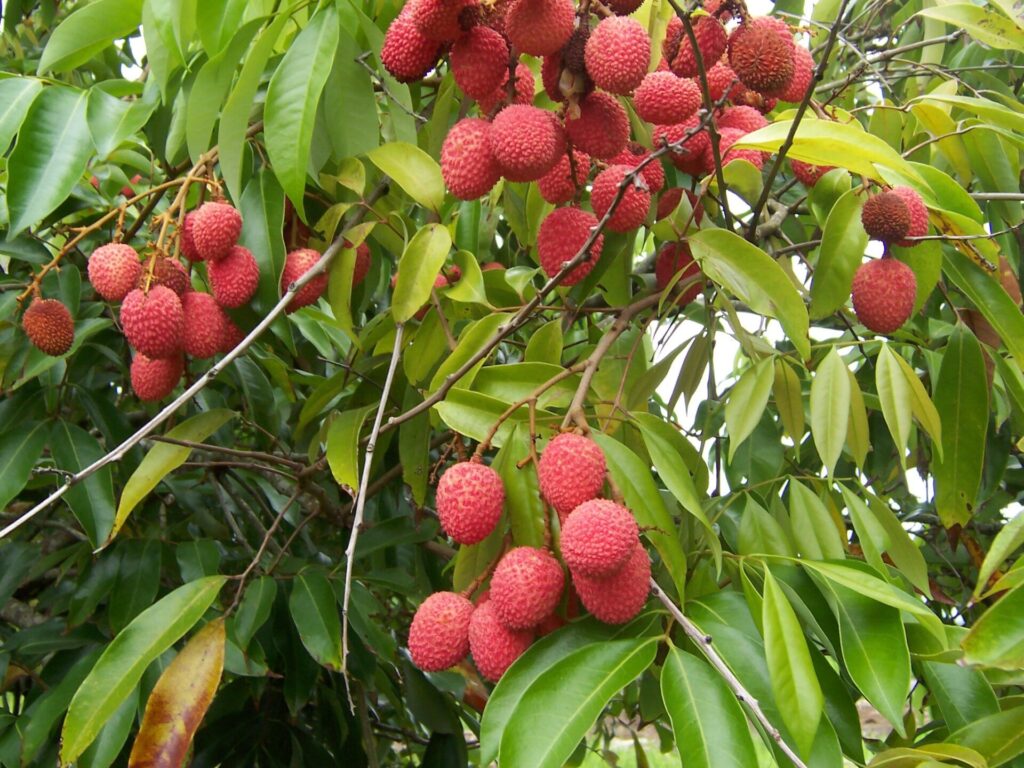The most notable of the soapberry family, Sapindaceae, Lychee trees bloom in the late
winter to early spring. It is a broadleaf evergreen fruit tree. The resulting fruits are actually drupes,
which are borne in clusters of from 3-50 fruits. The fruit is round to oval and 1-1.5 inches (25-38 mm.)
across and a bumpy textured pink to red in color. Once peeled, the interior of fruit is whitish, semitransparent, and juicy. Each drupe contains one shiny, dark brown seed. The tree is familiar to Florida,
Hawaii, southern California, and southern Texas. While some subtropical fruits, such as these, may
survive outdoors only in Canada’s warmest of growing regions, southwestern British Columbia, they
can also be grown indoors in pots for anyone to enjoy. Some Common Names are Litchi, Leechee,
Lichee, Lichi.






